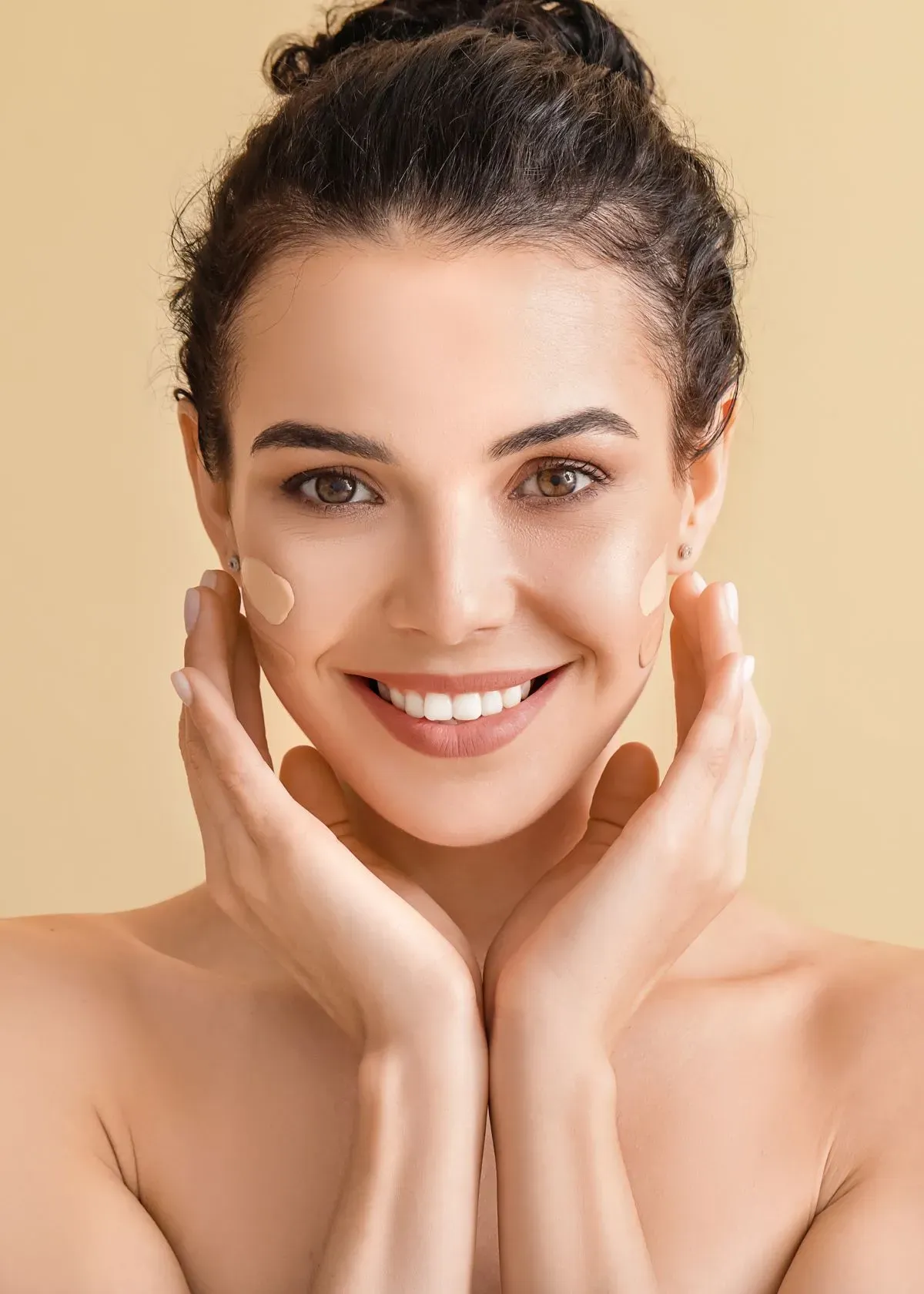Are you all too familiar with the midday makeup meltdown? I know how disheartening it can be—peeking in a mirror only to see your foundation betraying you by clinging desperately to those pesky dry areas. But don’t lose hope!
Trust me, some sleuthing and testing later, I've uncovered several insider secrets and products designed for our parched-skin predicament.
In this blog post, we’re going on a deep dive: from skincare routines that lay down the perfect canvas to selecting foundations that promise hydration heaven. If a luminous complexion is what you crave, stick around for these transformative tips!
- Exfoliate gently to remove dead flaky skin cells before applying foundation, creating a smoother surface for makeup.
- Use hydrating serums with ingredients like hyaluronic acid and moisturizers tailored for dry skin to boost hydration and prevent flaky makeup.
- Choose liquid or cream-based foundations labelled "hydrating" or "nourishing" to keep your skin moist and avoid a cakey appearance.
- Apply makeup and foundation with a damp makeup sponge by patting it onto the skin for even coverage without emphasizing dry areas.
- Finish your makeup routine with a setting spray formulated with moisturizing ingredients to lock in hydration and maintain a dewy look all day.
Importance of Skincare for Dry Flaky Skin
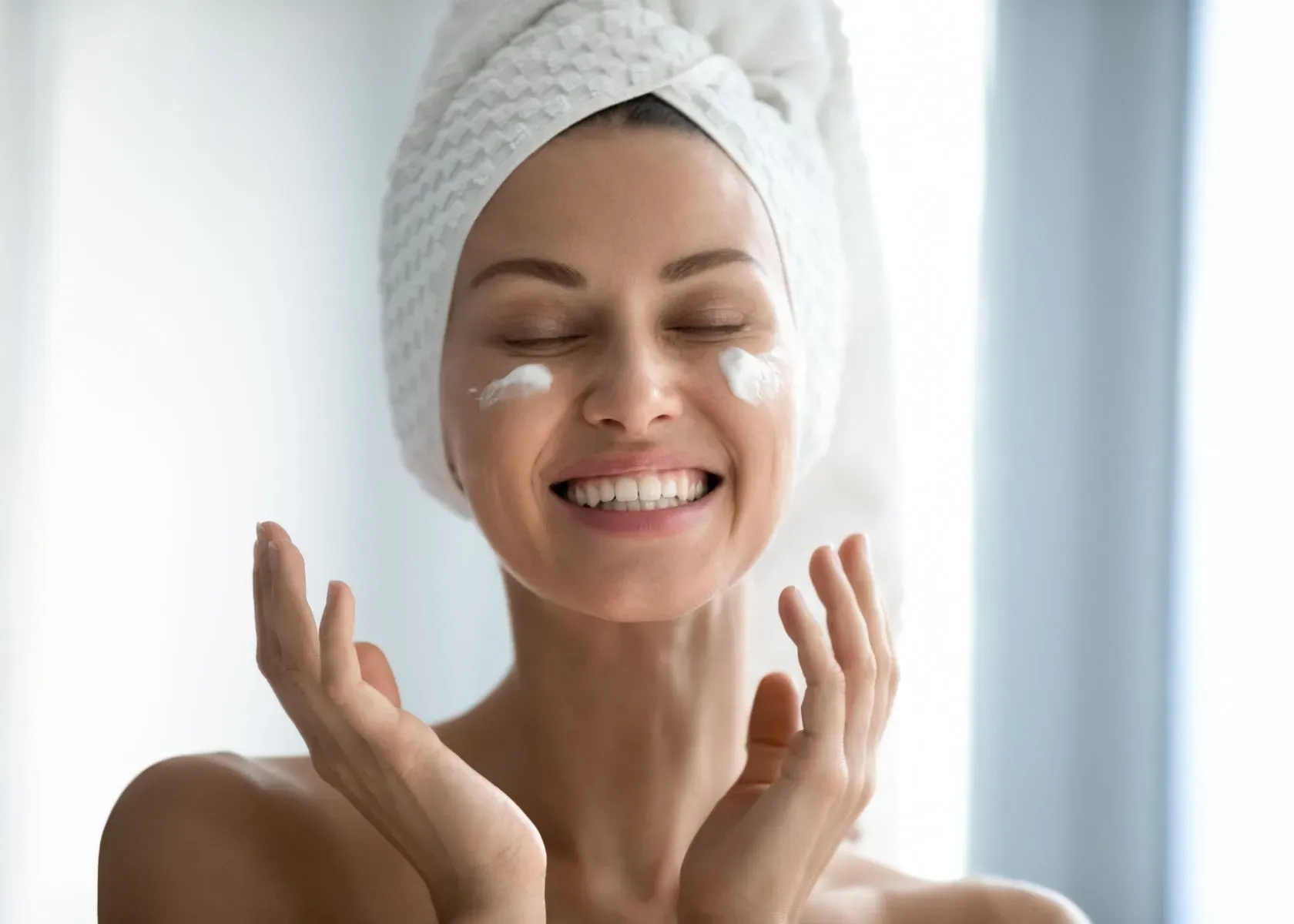
Proper skincare for dry skin is essential to maintain a smooth and healthy complexion. Exfoliating, using hydrating serums, and moisturizing can help combat flakiness and keep your skin hydrated.
Exfoliate
I make sure to exfoliate before applying my foundation. It's a game changer for my dry skin, sweeping away those pesky dead cells that can cause flakiness. Smooth skin is the key to flawless makeup, starting with gentle exfoliation.
I use a mild scrub for sensitive skin or an enzyme-based product that doesn't irritate. This step creates the perfect canvas for everything else I apply.
My routine includes focusing on areas where dryness, like around the nose and chin, tends to show more. Exfoliating not only smooths but also improves how well my moisturizer works. Try out a cleanser with glycolic acid for perfect results.
Without all those dead cells in the way, hydrating serums and creams penetrate deeper and keep my skin supple much longer. It ensures that when I apply foundation, it glides on instead of clinging to rough patches.
Hydrate
After exfoliating, I apply a hydrating serum to my dry skin. Hyaluronic acid is a key ingredient in many hydrating serums, which helps to attract and retain moisture in the skin.
This extra boost of hydration not only improves the skin's texture but provides a plumping effect that can help reduce the appearance of fine lines and wrinkles. Hydrating serums are lightweight and easily absorbed, making them an ideal addition to any skincare routine for dry skin.
Using a hydrating serum before applying moisturizer can enhance its effectiveness by locking in more moisture. It also creates a smooth base for makeup application, ensuring the foundation glides seamlessly without emphasizing dry patches or flakiness.
Moisturize
I use a nourishing moisturizer before applying makeup to keep my skin hydrated. This helps to create a smooth base and prevents my foundation from looking cakey or emphasizing dry patches.
Using a heavier moisturizer at night and a lighter one during the day addresses the specific needs of my dry skin, helping to maintain its moisture balance.
Choosing products specifically formulated for dry skin has been essential in preventing flakiness and enhancing my natural radiance.
By incorporating a hydrating serum into my skincare routine, I've noticed the improved texture and boosted moisture levels in my skin, creating an ideal canvas for flawless makeup application.
Choosing the Right Products for Dry Skin
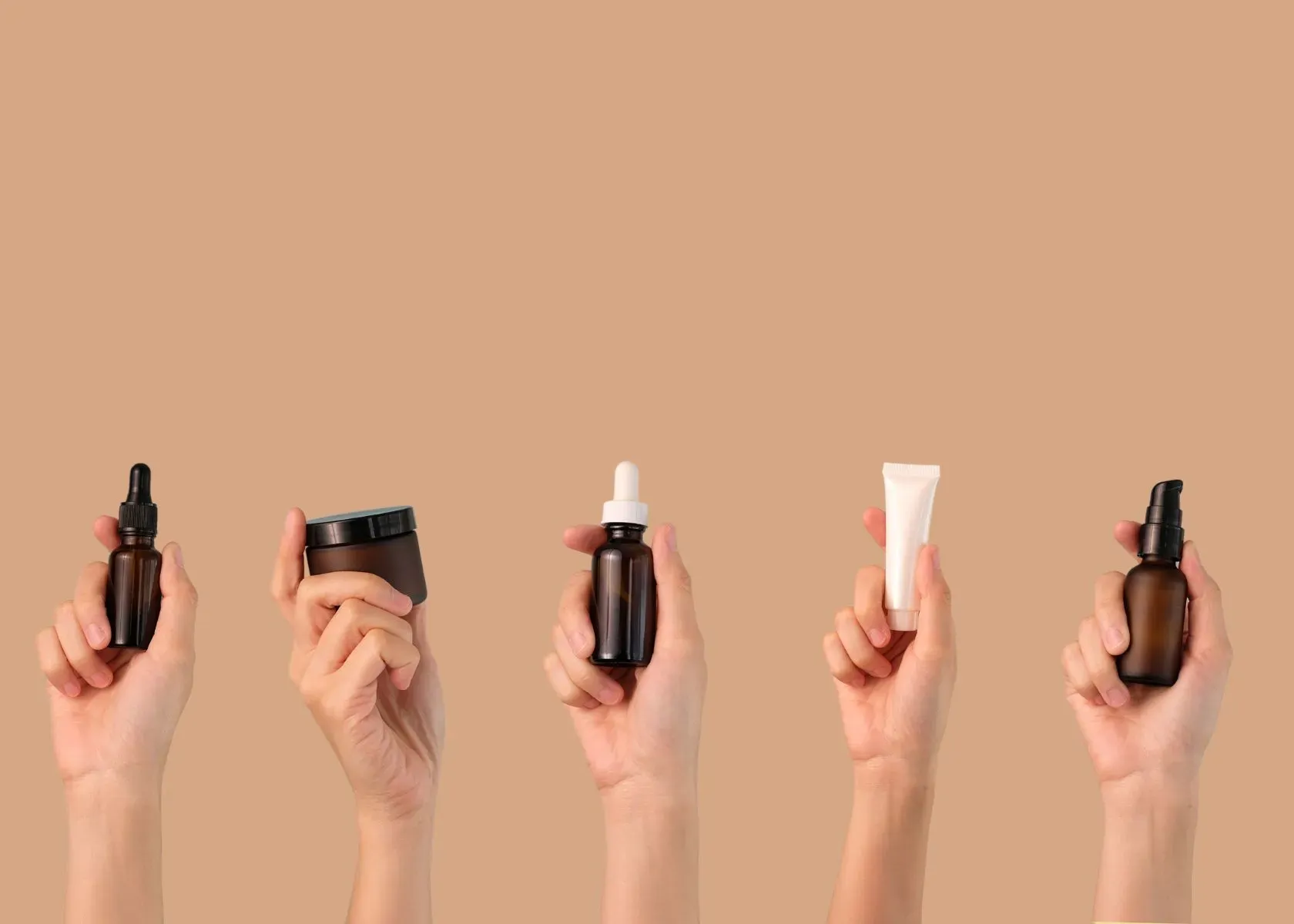
Choosing the right products for dry skin is crucial for a flawless makeup look - just as the right skincare. From hydrating primers to foundation formulas designed specifically for dry skin, it's essential to use products that provide moisture and nourishment.
Makeup sponges can also make a difference in how your makeup applies, so be sure to choose one that is gentle on dry skin.
Hydrating Primer
Hydrating primers are essential for dry skin as they provide an extra layer of moisture and create a smooth base for foundation application. This primer is formulated with hydrating ingredients like hyaluronic acid or glycerin, which helps lock in moisture and prevent the foundation from clinging to dry patches.
Applying a hydrating primer before the foundation can also help to extend the wear time of your makeup by creating a barrier between the skin and the makeup, ensuring that your skin stays hydrated throughout the day.
Foundation Formula
Look for foundations labelled as "hydrating," "nourishing," or "moisturizing" to provide the necessary moisture and prevent flakiness. These formulas often contain ingredients like hyaluronic acid, glycerin, or oils that help keep the skin hydrated and radiant throughout the day.
When choosing a foundation formula for dry skin, consider choosing liquid or cream-based products over powder foundations. Liquid formulas blend more seamlessly into the skin and provide a dewy finish, while cream-based foundations offer added hydration and coverage without emphasizing dry patches.
Makeup Sponge
A makeup sponge can help achieve a smooth and natural finish when applying foundation to dry skin. The dampened sponge can blend the foundation seamlessly into the skin, preventing it from settling into dry patches or emphasizing flakiness.
Additionally, dabbing the makeup sponge gently onto the skin helps build coverage gradually without disrupting the skin's texture.
A high-quality makeup sponge is essential for achieving a flawless look on dry flaking skin. It allows for precise application and blending of foundation, concealer, and other complexion products without exacerbating dryness or uneven texture.
Application Techniques
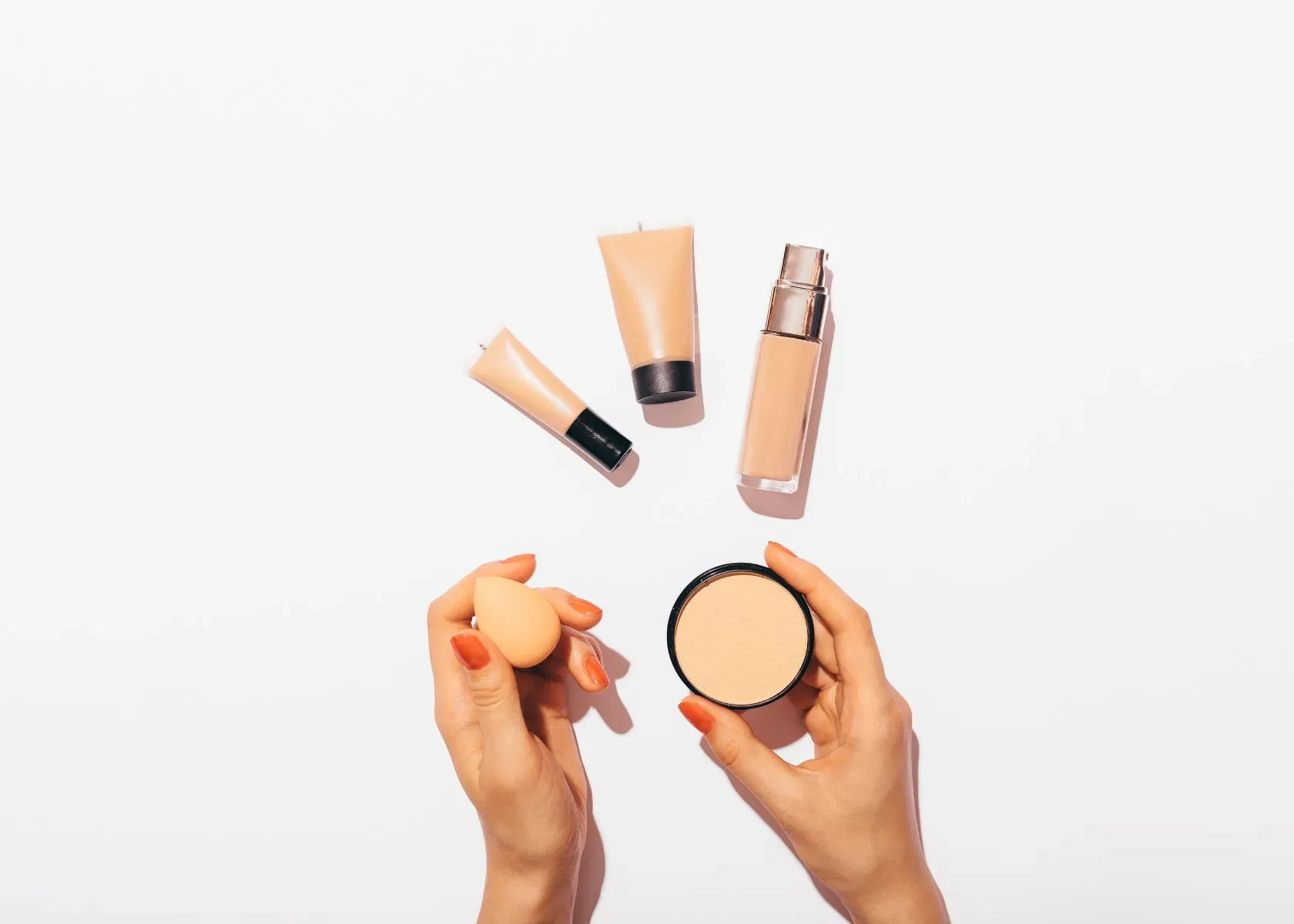
Patting the foundation onto the skin helps to evenly distribute and build coverage while avoiding powders can prevent further drying out the skin. Want to learn more about achieving a flawless and hydrated makeup look on dry skin? Keep reading!
Patting
When applying foundation to dry skin, patting is a technique that can help preserve the skin's moisture and natural oils and prevent exacerbating any flakiness or texture.
Avoid rubbing or swiping the foundation onto the skin. Gently patting it with fingers or a makeup sponge can provide a more seamless and natural finish and keep your makeup smooth.
Furthermore, using this patting technique with other cream-based products like blush and highlighter on dry skin allows for better blending while maintaining your skin's hydration levels.
Avoiding powders
Powders can emphasize dryness and settle into fine lines, making the skin appear dull and flaky. So, the makeup artists emphasize that instead of using traditional powders to set your makeup, opt for a lightweight setting spray to lock in your foundation without adding extra dryness.
Look for setting sprays containing hydrating ingredients like glycerin or hyaluronic acid to keep your skin fresh and dewy throughout the day.
A cream-based blush and highlighter can naturally glow the skin without accentuating dry patches. Cream formulas blend seamlessly onto the skin, providing a radiant finish while maintaining moisture.
Achieving a Dewy Finish
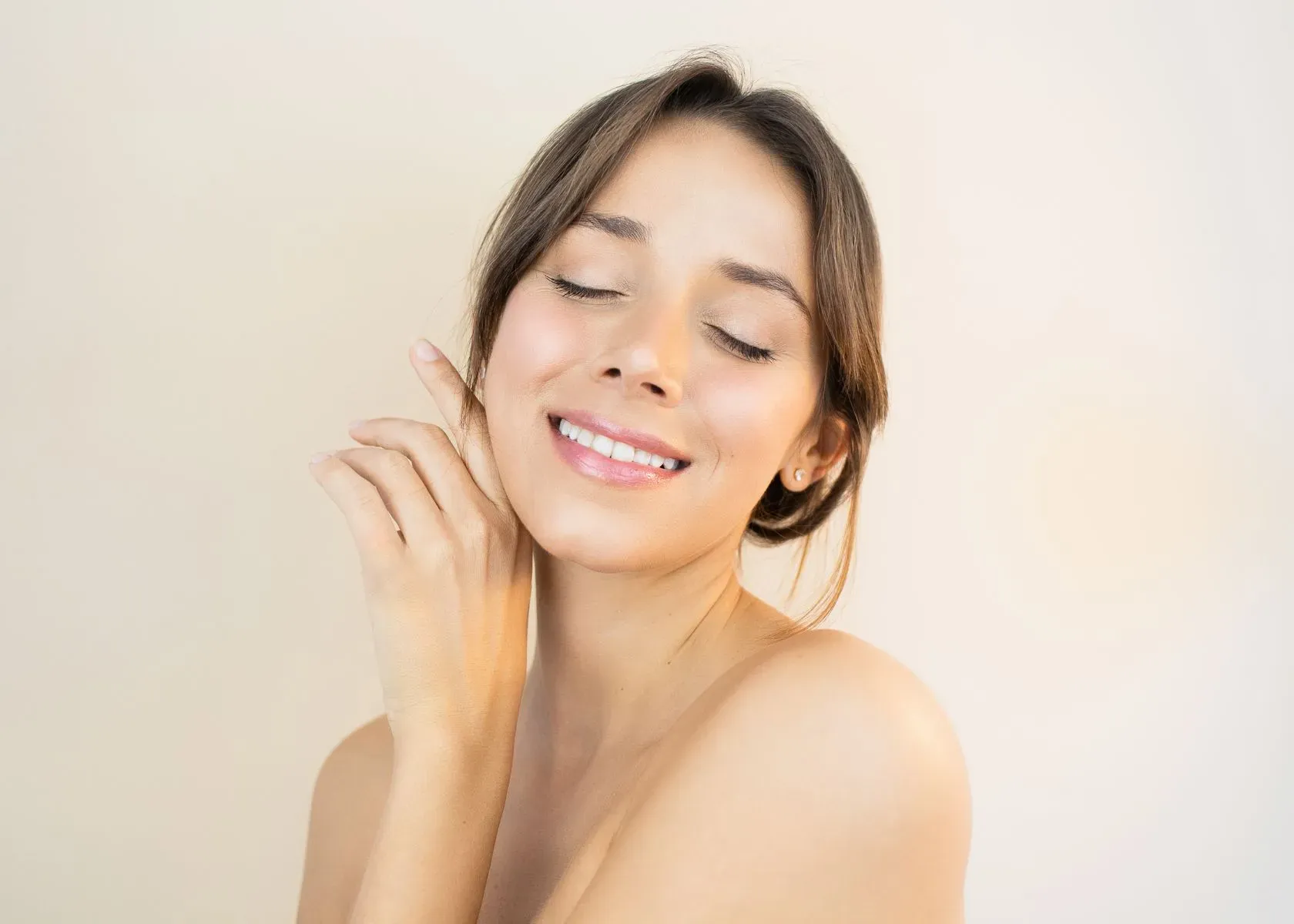
Enhance your dewy makeup look and a natural looking glow for dry skin with the perfect cream blush, highlighter, and setting spray. Keep reading for more tips on achieving a flawless and hydrated makeup look on dry skin.
Cream blush
A cream blush is ideal for dry skin to achieve a dewy finish. Cream blushes have a hydrating formula that blends seamlessly into the skin, providing a natural flush of colour without emphasizing any dry patches.
The creamy texture also adds extra moisture to the skin, creating a youthful and radiant look. Applying the cream blush with your fingertips or a damp makeup sponge helps to melt the product into your skin for a seamless and dewy finish.
Additionally, choosing shades with warm undertones can complement dry skin beautifully, adding a healthy glow to your complexion.
Highlighter
When choosing a highlighter for dry skin, choose creamy formulas that provide a luminous sheen without emphasizing dry patches. Cream or liquid highlighters blend seamlessly into the skin, offering a natural-looking radiance while adding a touch of moisture to the complexion.
Applying highlighter strategically to areas where light naturally hits the face, such as cheekbones, brow bones, and down the nose bridge, can enhance your overall dewy makeup look.
Use your fingertips or a damp makeup sponge to gently pat and blend the product onto your skin for an even more seamless application. This technique helps prevent disturbing any layers of skincare underneath and ensures that the highlighter melds effortlessly with your foundation for a natural finish.
Setting spray
To lock in the hydration in the skin texture and ensure my makeup lasts all day, I use a setting spray specifically formulated to keep my dry skin looking fresh and dewy. I can ensure my skin stays nourished and radiant the entire day by choosing a setting spray with hydrating ingredients like glycerin or hyaluronic acid.
Applying the setting spray is simple; after completing my makeup routine, I hold the bottle about 8-10 inches away from my face and mist it in an "X" and "T" shape for even coverage. This gives a satin finish also adding moisture to the skin.
If your foundation still looks dry, try a few drops of facial oil under the liquid foundation with a damp sponge! This will help soothe the dry flakes.
Foundation Tips for Dry Skin - FAQs
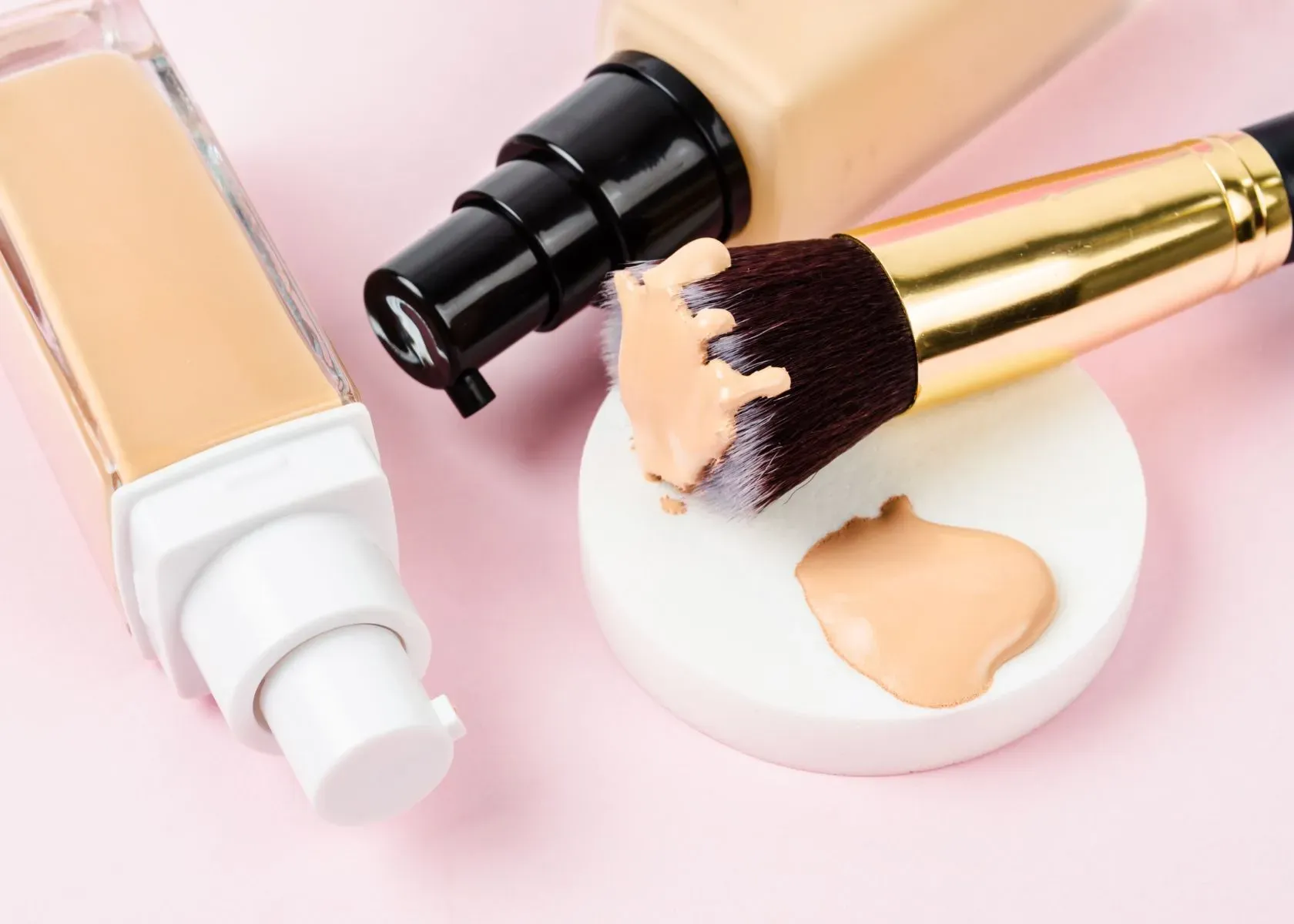
Here are some of the questions we asked a celebrity makeup artist, and here is what she had to say.
How should I prepare my dry skin before applying foundation?
Before applying foundation, it's best to exfoliate gently to remove flaky skin and use a good moisturizer for dry skin to ensure proper hydration. Keep the eye area well hydrated for smooth eye makeup - even when you need a matte finish.
What type of foundation works best on dry skin?
For dry, dead skin cells, opt for hydrating or nourishing foundations that offer a dewy finish rather than matte formulas, which might emphasize dry areas. You can go for BB cream of full coverage foundation with oily ingredients.
Can I use concealer on my dry skin?
Yes, choose a creamy hydrating concealer with a face mist that can provide moisture while covering imperfections without clinging to the drier parts of your face. This works pretty well for very dry skin.
Conclusion
Want flawless makeup on dry skin? Start with gentle exfoliation for a smooth canvas. Use a hydrating serum and moisturizer to add moisture. When choosing a foundation, choose the right foundation formula designed specifically for dry skin. Make sure you choose a hydrating lipstick for an overall dewy finish.
Apply products strategically to achieve a smoother finish without emphasizing dryness. Remember, with the proper techniques and products, you can achieve a radiant and hydrated makeup look on dry skin! If you want to share more tips that you follow for your dry skin, write to us in the comments section below.
References
- How to safely exfoliate at home. (n.d.). https://www.aad.org/public/everyday-care/skin-care-secrets/routine/safely-exfoliate-at-home
- Professional, C. C. M. (n.d.). Hyaluronic acid. Cleveland Clinic. https://my.clevelandclinic.org/health/articles/22915-hyaluronic-acid
Learn More About Related Topics of Foundations
